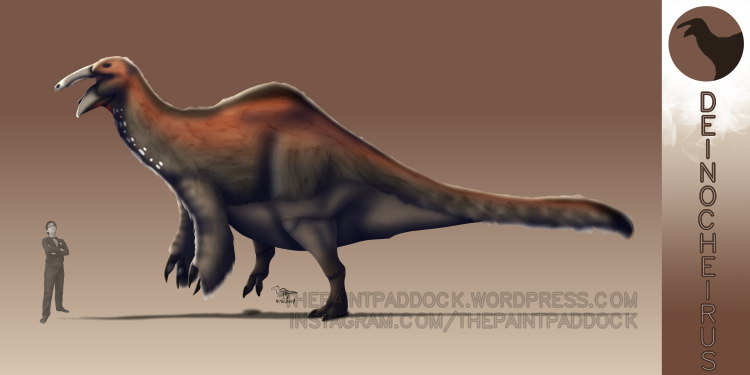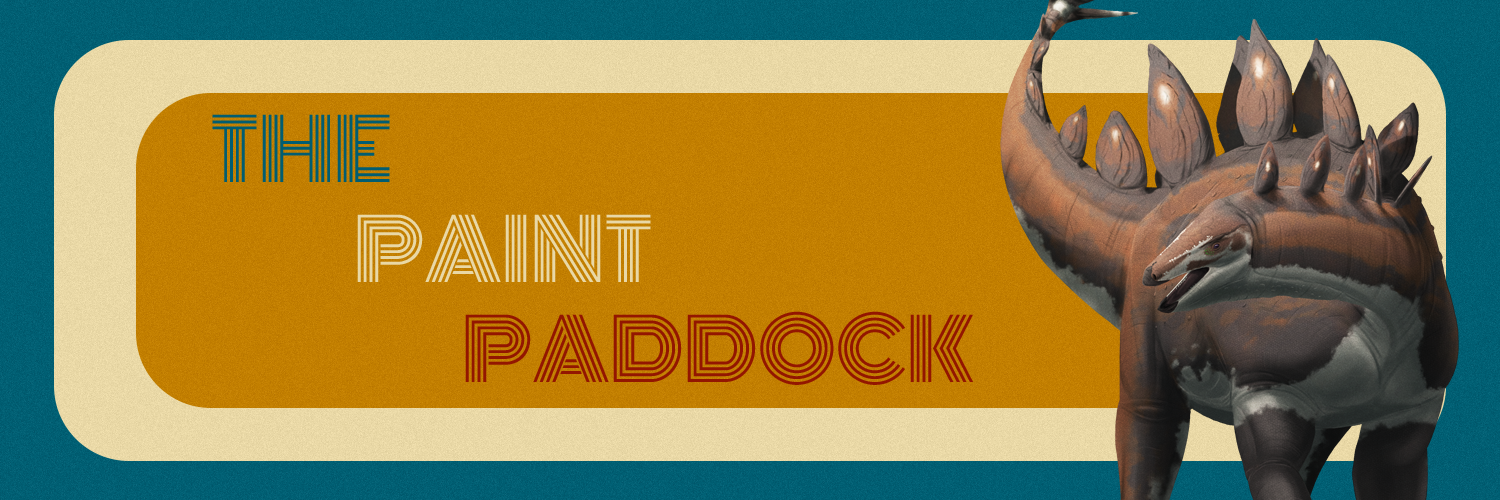
Deinocheirus mirificus — “Peculiar horrible hand”
Specimen Name & Sex: Oscar (male)
Specimen Height: 5.44m
Specimen Length: 14.5m
Specimen Weight: 10.5 tonnes
Deinocheirus is one of the strangest dinosaurs to ever be discovered. Looking like a chimera between a hadrosaur, camel, and a duck, its true heritage lies with the ornithomimosaurs; it was related to the fast-moving “ostrich dinosaurs” such as Gallimimus, Ornithomimus, and Struthiomimus. Its massive 2.4-m arms puzzled scientists for half a century (it was even named after ’em!), and it was not until the early 2010s that scientists pieced together its likely placement in the dinosaur family tree. Another striking characteristic of this taxon is the “hump” of raised vertebral processes, which has been compared to that of Spinosaurus’ sail or bison humps. The purpose of this structure is still largely unknown; even I offer no hypotheses to explain the growth.
Oscar occupied an ecological niche unlike that of any one living animal today. As a swampland/shoreline inhabitant, he would’ve enjoyed a fairly variable diet consisting of fish and presumably soft aquatic vegetation. Evidence of this omnivorous lifestyle was uncovered in the form of preserved fish scales and gastroliths (rocks and other hardened substrate swallowed to aid in digestion of plants) associated with a Deinocheirus specimen.
—
Artist Notes:
This enigma of a dinosaur has been equal parts interesting and irritating to research and illustrate. It’s a ridiculous creature with gangly proportions and, as mentioned prior, has no living analogs. To reflect this, I upped the strangeness with speculative filter-dentition inspired from flamingos and baleen whales, which is one of my prouder original speculations. I also debated to give Oscar webbed feet, but I felt his kind would be ill-suited to full submersion and would likely prefer to wade through the water. Other ornithomimosaurs were found to possess pennaceous feathers on the tail, implying a tail fan of sorts. I neglected to include this feature on this highly-derived taxon. If future developments suggest it retained a tail fan similar to its cousins, I’ll add it (written as of 5 April, 2017).
—
Skeletal reference by Scott Hartman
